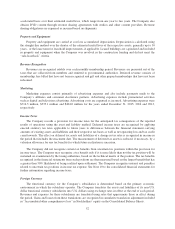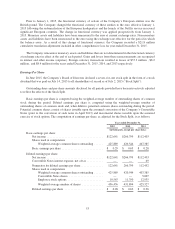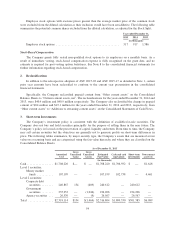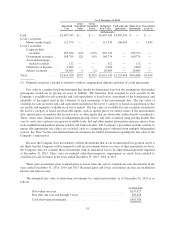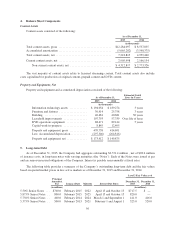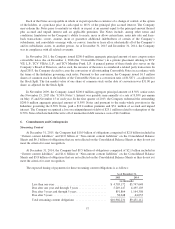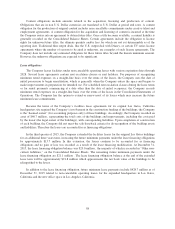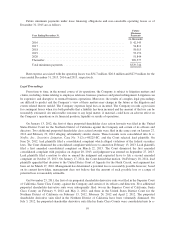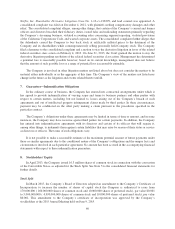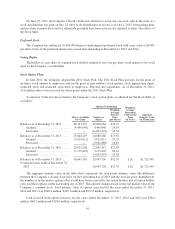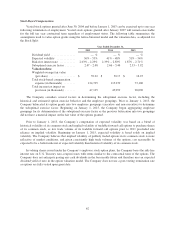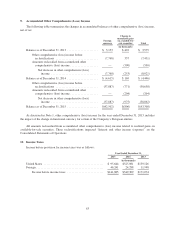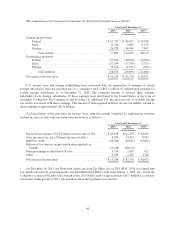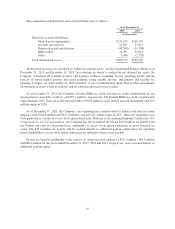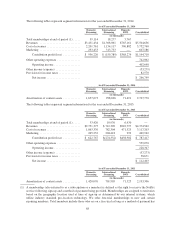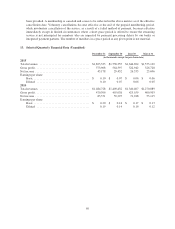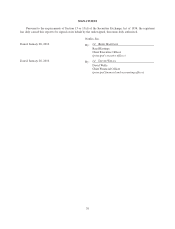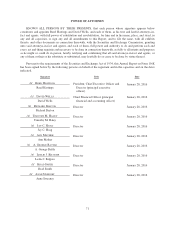NetFlix 2015 Annual Report Download - page 66
Download and view the complete annual report
Please find page 66 of the 2015 NetFlix annual report below. You can navigate through the pages in the report by either clicking on the pages listed below, or by using the keyword search tool below to find specific information within the annual report.
Stock-Based Compensation
Vested stock options granted after June 30, 2004 and before January 1, 2007 can be exercised up to one year
following termination of employment. Vested stock options granted after January 2007 will remain exercisable
for the full ten year contractual term regardless of employment status. The following table summarizes the
assumptions used to value option grants using the lattice-binomial model and the valuation data, as adjusted for
the Stock Split:
Year Ended December 31,
2015 2014 2013
Dividend yield ................. — % — % — %
Expected volatility ............. 36%–53% 41%–48% 51%–54%
Risk-free interest rate ........... 2.03% – 2.29% 2.39% – 2.83% 1.87% – 2.71%
Suboptimal exercise factor ....... 2.47 – 2.48 2.66 – 5.44 2.33 – 3.92
Valuation data:
Weighted-average fair value
(per share) .................. $ 39.22 $ 30.17 $ 16.25
Total stock-based compensation
expense (in thousands) ........ 124,725 115,239 73,100
Total income tax impact on
provision (in thousands) ....... 47,125 43,999 28,096
The Company considers several factors in determining the suboptimal exercise factor, including the
historical and estimated option exercise behavior and the employee groupings. Prior to January 1, 2015, the
Company bifurcated its option grants into two employee groupings (executive and non-executive) to determine
the suboptimal exercise factor. Beginning on January 1, 2015, the Company began aggregating employee
groupings for its determination of the suboptimal exercise factor as the previous bifurcation into two groupings
did not have a material impact on the fair value of the options granted.
Prior to January 1, 2015, the Company’s computation of expected volatility was based on a blend of
historical volatility of its common stock and implied volatility of tradable forward call options to purchase shares
of its common stock, as low trade volume of its tradable forward call options prior to 2011 precluded sole
reliance on implied volatility. Beginning on January 1, 2015, expected volatility is based solely on implied
volatility. The Company believes that implied volatility of publicly traded options in its common stock is more
reflective of market conditions, and given consistently high trade volumes of the options, can reasonably be
expected to be a better indicator of expected volatility than historical volatility of its common stock.
In valuing shares issued under the Company’s employee stock option plans, the Company bases the risk-free
interest rate on U.S. Treasury zero-coupon issues with terms similar to the contractual term of the options. The
Company does not anticipate paying any cash dividends in the foreseeable future and therefore uses an expected
dividend yield of zero in the option valuation model. The Company does not use a post-vesting termination rate
as options are fully vested upon grant date.
62


